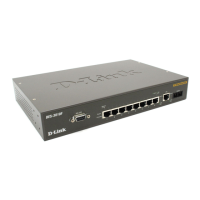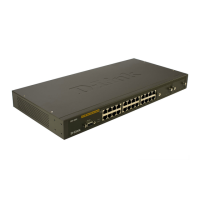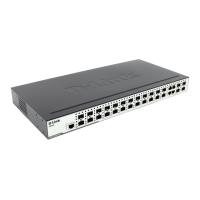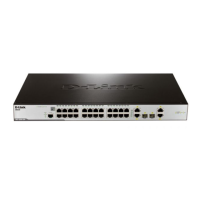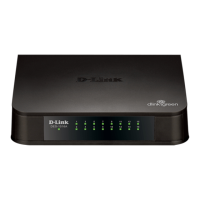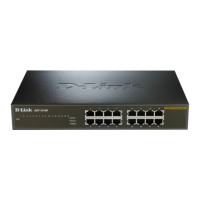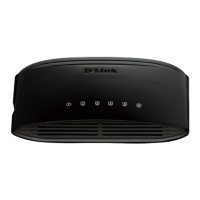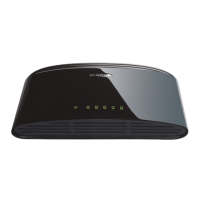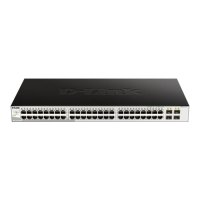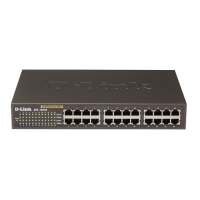DES-3010F/DES-3010FL/DES-3010G/DES-3018/DES-3026 Fast Ethernet Switch Manual
The following fields can be set:
Parameter Description
From/To
A consecutive group of ports may be configured starting with the selected port.
Cost (0 = Auto)
External Cost - This defines a metric that indicates the relative cost of forwarding
packets to the specified port list. Port cost can be set automatically or as a metric
value. The default value is 0 (auto).
•
•
0 (auto) - Setting 0 for the external cost will automatically set the speed for
forwarding packets to the specified port(s) in the list for optimal efficiency.
Default port cost: 100Mbps port = 200000. Gigabit port = 20000.
value 1-2000000 - Define a value between 1 and 2000000 to determine
the external cost. The lower the number, the greater the probability the
port will be chosen to forward packets.
Priority
A Port Priority can be from 0 to 240. The lower the number, the greater the
probability the port will be chosen as the Root Port.
Migration
Setting this parameter as "yes" will set the ports to send out BPDU packets to other
bridges, requesting information on their STP setting If the Switch is configured for
RSTP, the port will be capable to migrate from 802.1d STP to 802.1w RSTP.
Migration should be set as yes on ports connected to network stations or segments
that are capable of being upgraded to 802.1w RSTP on all or some portion of the
segment.
Edge
Choosing the true parameter designates the port as an edge port. Edge ports
cannot create loops, however an edge port can lose edge port status if a topology
change creates a potential for a loop. An edge port normally should not receive
BPDU packets. If a BPDU packet is received, it automatically loses edge port
status. Choosing the false parameter indicates that the port does not have edge
port status.
P2P
Choosing the True parameter indicates a point-to-point (P2P) shared link. P2P ports
are similar to edge ports, however they are restricted in that a P2P port must
operate in full-duplex. Like edge ports, P2P ports transition to a forwarding state
rapidly thus benefiting from RSTP. A p2p value of false indicates that the port
cannot have p2p status. Auto allows the port to have p2p status whenever possible
and operate as if the p2p status were true. If the port cannot maintain this status,
(for example if the port is forced to half-duplex operation) the p2p status changes to
operate as if the p2p value were False. The default setting for this parameter is
True.
BPDU
Choosing Enabled will allow the forwarding of BPDU packets in the specified ports
from other network devices. This will go into effect only if STP is globally disabled
AND Forwarding BPDU is globally enabled (See STP Bridge Global Settings
above).
The default setting Disabled, does not forward BPDU packets when STP is
disabled.
LBD
Use the pull-down menu to enable or disable the loop-back detection function on
the Switch for the ports configured above. For more information on this function, see
the STP LoopBack Prevention section.
Click Apply to implement changes made.
NOTE: To enable Forwarding BPDU on a per port basis, the following settings must first be in effect:
1. STP must be globally disabled and 2. Forwarding BPDU must be globally enabled. These are the
default settings configurable in the STP Bridge Global Settings menu discussed previously.
91
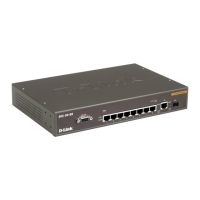
